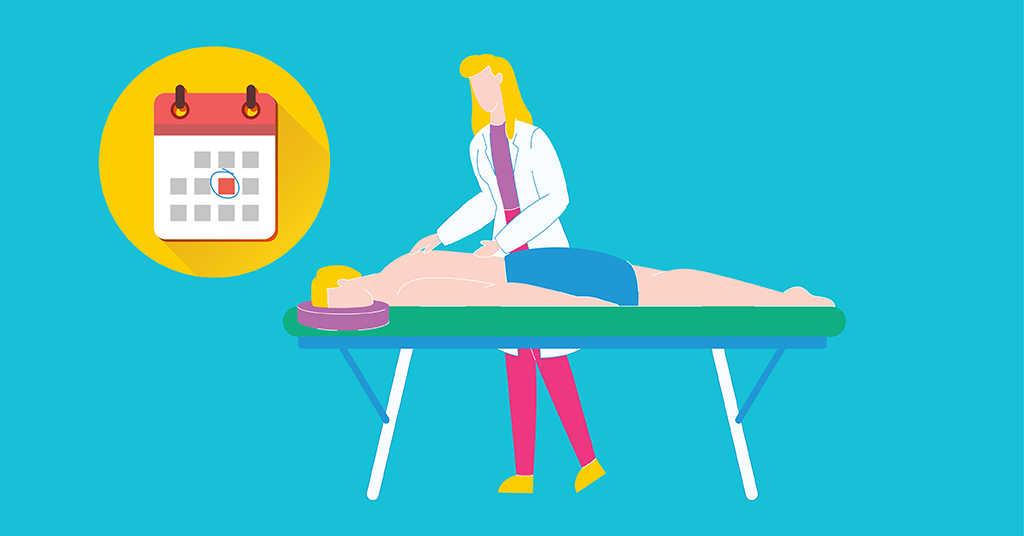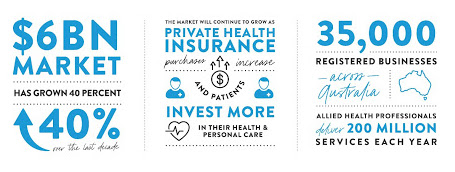14 Jul Allied Health: 6 ways to keep your patients coming back

The allied health sector has seen exponential growth over the last decade, becoming a market with a $6bn value. According to the Allied Health Professionals Australia (AHPA)¹, there are now over 35,000 registered businesses/practices across Australia. Over 195,000 allied health professionals represent more than a quarter of the health workforce, and deliver over 200 million services each year.

The sector is expecting to grow further due to a number of different factors, such as; the impact of the pandemic with more people investing in their health and future, lack of medicare cover for certain services, the increase in tele-health and digital consultations, the rise of sports injuries and the Government’s financial contributions to NDIS and supporting the increasing demand of services across the sector.
Of course, as demand and the number of registered practices grow, so too does the competition. So what strategies does your practice have in place to ensure that your patients are returning to your practice, and your practice only?
With 80% of your future profits coming from just 20% of your existing patients², and the cost of acquiring a new patient being 10x more than it is to retain an existing one – you can understand just how important patient retention is to enable your practice to achieve sustainable growth.
We have listed 6 ways to help ensure your practice remains front of mind when it comes to your patients and their quality of care:
1. Make sure you’re getting the most out of your Practice Management System (PMS)
Data. We can’t stress enough the importance of data compliance and data accuracy. If you have health records in your PMS that haven’t been updated for a very long time, then this is your first priority. You may be wasting marketing budget; sending messages to patients who have moved, changed their details, or are on the system twice/three times. Duplicate records mean your patient could be receiving multiple messages, costing your practice twice as much. There’s also probably a lot more that your PMS can do than you’re aware of. For example, we recently worked with Nookal to help improve their API integration, making it much more robust – to ensure our client, Healthia could truly benefit from the platform. Learn more about this project in our case study.
2. Implement an effective patient recall program
Once your patient records are up to date, it’s essential you implement a patient recall program. Remember, people are busy, they often forget it’s time for a check up and need a reminder (even when its health related). Don’t wait for your patients to contact you, set up a program which automatically contacts the patient in advance of when their next appointment is due. Taking this proactive approach will deliver extremely positive outcomes for your clinic.
3. Market smarter: make it easy for your patients
There’s no one size fits all when it comes to marketing to your patients. Each and every one is on their own journey (more on this in our next point). Don’t rely on email as your only channel, we’ve seen incredible success using SMS and practitioners making outbound calls to confirm and book appointments. Remember that patients are on the move, older generations have embraced digital and pretty much every patient wants an easy life. Make it easy for them. Remind them of when their next appointment is due (patient recall program), or give them the opportunity to check their details are still up-to-date, but let them confirm either in just a couple of clicks.
4. Let empathy and your duty of care shine in your marketing
Allied Health professionals have a duty of care to their patients. Put the patient at the centre of any marketing communications you share with them. Show them how much you genuinely care about their health, and help them improve it with proactive actions and advice. Add value and educate them; be it a series of exercises/stretches to help increase muscle strength, to breathing techniques to manage anxiety. Sharing your expertise and regularly checking-in with your patients is an authentic way of engaging them to see how they are going. They shouldn’t only be contacted when you have a special offer on or have gaps in your appointment book. It’s a long-term investment of time, attention and care.
5. Recognise your patients
A simple thank you goes a very long way. Are you treating your most loyal patients any differently to your new patients? If not, then you certainly should be. Recognise their loyalty and demonstrate how much you appreciate it. Offer suitable incentives (within the AHPRA guidelines of course) but, remember again, not one size fits all – just like the type of treatment you would administer, your patients will value different incentives that fit with their needs or preferences. Take time to understand what’s important to them and ask yourself what would they appreciate? What would make them feel valued? Happy patients visit again and again, they also bring their friends too. Make sure you always recognise those that refer.
6. Invest in partnerships
We’re seeing more Allied Health practices partner with local schools, doctors and registered charities. These partnerships have many benefits such as; brand awareness, access to a broader patient base, gaining a competitive edge and the opportunity to create meaningful social impacts. Start doing some research on who you could potentially partner with.
Allied Health plays such an important role in our day-to-day lives. It’s much more than simply providing a service – it’s an ongoing duty of care. It’s a responsibility. Take some time to assess how you are engaging with your patients and supporting them in every way that you can.
¹ https://ahpa.com.au/what-is-allied-health/
² Gartner
|
Listen to...
|


